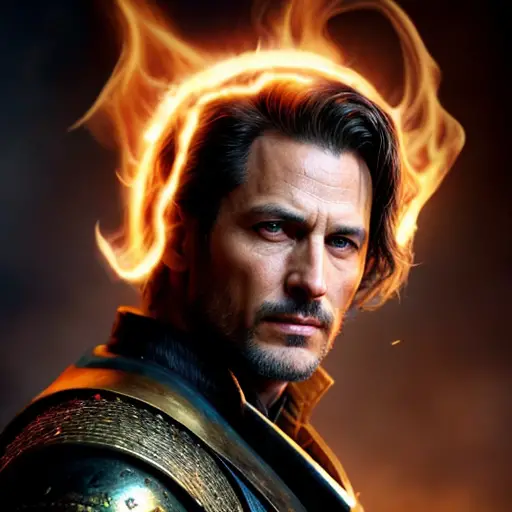Alright, picture this: Michelangelo, the artistic genius, is handed the ultimate challenge - painting the Sistine Chapel ceiling. Now, you might think, 'Oh, how glamorous! What an honor!' But hold your horses, because this task was no walk in the park. First off, we're talking about a massive ceiling, stretching over 5,000 square feet. Can you imagine the neck cramps? And let's not forget the logistics. Michelangelo had to come up with a way to paint while lying on his back, with paint dripping into his eyes. Talk about an occupational hazard! Oh, and did I mention the constant interruptions? The Pope himself would pop in, demanding updates and making suggestions. I mean, who needs peace and quiet when you're trying to create a masterpiece, right? So, next time you think your job is tough, just remember poor Michelangelo, battling gravity, paint, and papal opinions, all in the name of art.
One interesting fact about the complications Michelangelo faced while painting the Sistine Chapel is that he had to work in an extremely uncomfortable position for an extended period of time. The ceiling of the chapel is about 68 feet high, and Michelangelo had to lie on his back on a scaffolding for four years to complete the masterpiece. This strenuous position caused him great physical discomfort, resulting in neck pain, strained eyes, and even deteriorating eyesight. Despite these challenges, Michelangelo persevered and created one of the most iconic works of art in history.
Let's talk about Michelangelo, the man who took on the monumental task of painting the Sistine Chapel ceiling. Now, imagine being a sculptor by trade and suddenly finding yourself knee-deep in the world of fresco painting. Talk about a fish out of water! Michelangelo had to grapple with an unfamiliar medium, learning the ins and outs of mixing pigments and working with wet plaster. And if that wasn't challenging enough, let's not forget the physical toll this endeavor took on him. Day after day, he contorted his body into all sorts of uncomfortable positions, lying on his back, arms raised, for hours on end. I don't know about you, but I struggle just sitting at a desk for too long. So, hats off to Michelangelo for enduring the physical hardships and pushing through to create one of the most breathtaking masterpieces in history.

Let's dive into the artistic dilemmas that Michelangelo faced while painting the Sistine Chapel. Now, imagine being tasked with depicting complex iconography that tells the story of creation, the fall of man, and the salvation of humanity. It's enough to make your head spin! Michelangelo had to carefully plan and execute a narrative that flowed seamlessly across the ceiling, ensuring that each scene conveyed its intended meaning. This required a deep understanding of theology and a keen eye for composition. Talk about pressure!
But the challenges didn't stop there. As Michelangelo worked tirelessly, he found himself constantly grappling with the ever-changing design. The Pope and other influential figures would offer their input, suggesting alterations and additions. Can you imagine the frustration? Just when you think you've got a handle on things, someone comes along and throws a curveball. Yet, Michelangelo had to adapt and incorporate these changes while maintaining the overall harmony and coherence of the artwork. It was a delicate balancing act, to say the least.
Furthermore, the sheer scale of the project posed its own set of artistic dilemmas. The Sistine Chapel ceiling spans a vast expanse, and Michelangelo had to consider how his compositions would be viewed from below. He had to carefully manipulate perspective and foreshortening to create the illusion of depth and three-dimensionality. It was like painting on a giant canvas, but with the added challenge of ensuring that the artwork was visually impactful from every angle. Talk about a mind-boggling task!
In the midst of all these artistic dilemmas, Michelangelo's determination and artistic genius prevailed. He pushed through the complexities, the changes, and the physical strain to create a masterpiece that continues to awe and inspire to this day. So, the next time you find yourself facing a creative challenge, just remember Michelangelo and his battle with the complex iconography and constantly changing design of the Sistine Chapel. If he could conquer those obstacles, surely you can conquer yours too!
While painting the Sistine Chapel, Michelangelo faced numerous complications, one of which was his intense fear of heights. Despite this fear, he had to spend countless hours on a scaffold, suspended high above the ground, to paint the intricate ceiling. To overcome his fear, he devised a unique solution – he would lie on his back while painting, with his face turned upwards towards the ceiling. This allowed him to work comfortably and also gave him a fresh perspective on his masterpiece. So, next time you admire the Sistine Chapel, remember that Michelangelo conquered his fear of heights to create one of the most iconic works of art in history!
Let's delve into the political intrigues that Michelangelo encountered while painting the Sistine Chapel. As if the physical and artistic challenges weren't enough, he also had to navigate the treacherous waters of dealing with the Pope and the demands of the Church. The Pope, being the ultimate authority, had his own vision for the artwork and often clashed with Michelangelo's artistic choices. There were power struggles, disagreements, and compromises that had to be made. Michelangelo had to find a way to balance his artistic integrity with the expectations and desires of the Church, all while maintaining his sanity. It was a delicate dance, but one that Michelangelo managed to navigate, leaving behind a legacy that transcends the political intrigues of his time.